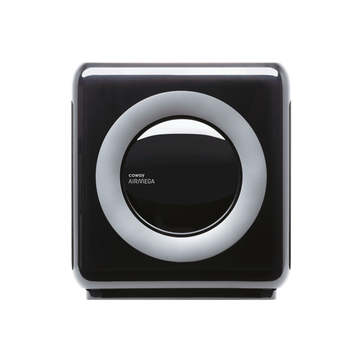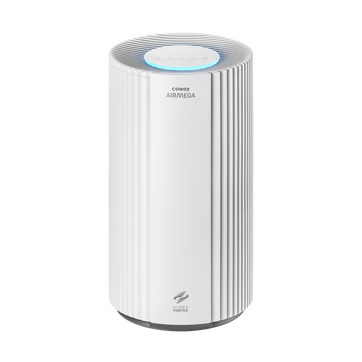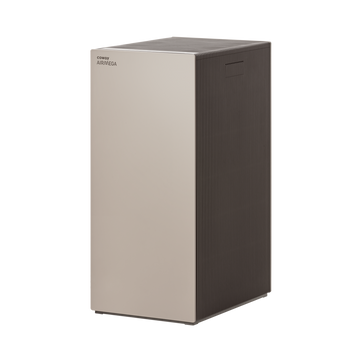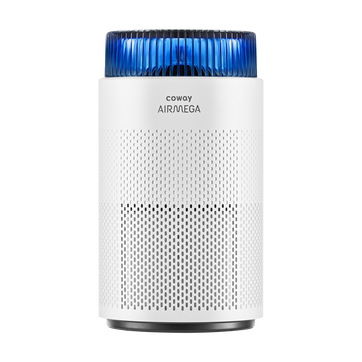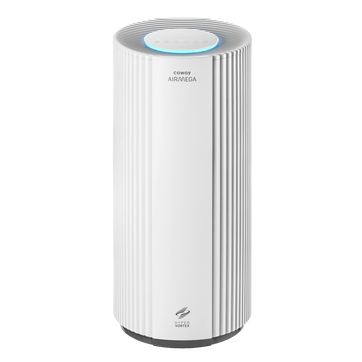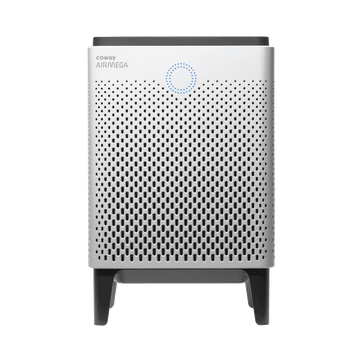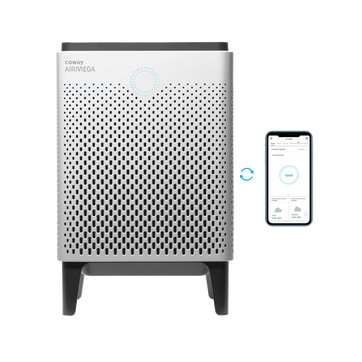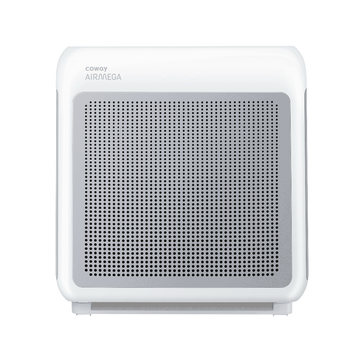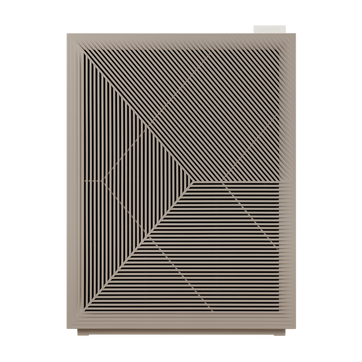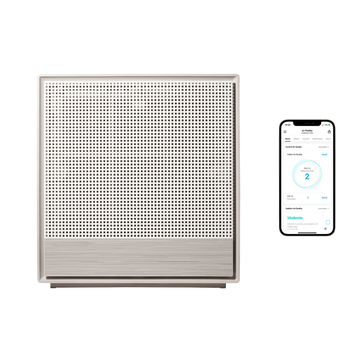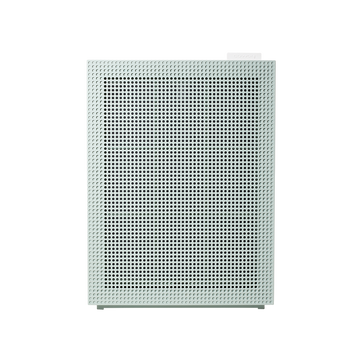
The Hidden Danger Lurking in Your Home: What is Off-Gassing and How to Reduce It
You walk into your newly renovated living room, ready to relax on your brand new leather couch. But instead of comfort, your eyes and throat start to burn. That “new furniture smell” might seem harmless, but it's a sign of off-gassing - the emission of volatile organic compounds (VOCs) from everyday household items.
In this blog post, we’ll explore what exactly off-gassing is, where it comes from, the health impacts, and most importantly - what you can do about it. Read on to learn how to identify and reduce off-gassing in your home.
What is Off-Gassing?
Off-gassing refers to the release of gasses that are embedded in solid materials. It primarily concerns VOCs, which easily evaporate at room temperature. While you might hear the terms "off-gassing" and "outgassing" used interchangeably, there's a subtle difference - outgassing is the technical term used by scientists to describe any material releasing gas, while off-gassing specifically refers to the release of VOCs from manufactured products in our everyday environment.
VOCs themselves are carbon-based chemicals like formaldehyde, benzene, and ethylene glycol. They have a variety of uses as ingredients or byproducts in household goods. The “new scent” of products like cars, furniture, paint, and carpeting comes from the VOC mixtures specific to their makeup. However, not all off-gassing produces an odor - some VOCs are completely odorless while still being present in the air.
While VOCs facilitate manufacture and use, they also react and degrade in the air over time. Off-gassing describes this process as VOCs exit solid forms and enter the surrounding environment. The duration of this process varies significantly by material - paint might off-gas for 6 months to a year, while new furniture can continue releasing VOCs for several years. Mattresses typically off-gas most intensely for about a month but can continue the process at lower levels for years.
Temperature plays a crucial role in off-gassing rates. Higher temperatures accelerate the process - this is why you might notice stronger "new" smells on hot days or when heating is turned up. When materials heat up, the VOCs become more volatile and release into the air more quickly. While this might seem concerning, it can actually be useful when trying to speed up the off-gassing process in a controlled, well-ventilated environment before bringing items into your living space.
What Products Off-Gas in My Home?
A wide variety of common products off-gas VOCs, including:
Furniture: Couches, chairs, tables, and cabinets made from particleboard and manufactured wood panels contain glues, binders, and finishes that release formaldehyde. Mattresses and pillows made with polyurethane foam and synthetic materials are also off-gas.
Flooring: Carpeting, vinyl tiles, and laminate flooring are culprits. The adhesives used to install them bring VOCs.
Building Materials: Insulation, plywood, particleboard, and paints used in construction contain formaldehyde and benzene that slowly emit.
Cleaning Supplies: Air fresheners, all-purpose cleaners, and detergents contain chemical propellants and fragrances that vaporize easily.
Everyday Materials: Office supplies, printer ink, cosmetics, and scented candles also produce VOCs like acetone, chlorine, ethanol, and lead.
With so many VOC sources, it’s no wonder over 90% of American homes have unhealthy levels.

What Are the Health Effects of Off-gassing?
Exposure to specific VOCs repeatedly and over long periods increases risks for:
- Eye, nose, and throat irritation
- Headaches, dizziness, and nausea
- Liver and kidney damage
- Central nervous system impairment
- Cancer (formaldehyde)
Sensitive groups like children, seniors, and those with respiratory issues or autoimmune diseases have heightened vulnerability. Studies also show correlations between VOC exposure and disorders like childhood leukemia, asthma, allergies, and multiple chemical sensitivity.
While more research is still needed, it is clear VOCs have detrimental effects on health that build up over time. This silent threat hides in plain sight through household goods.
Why Modern Homes Are More Vulnerable
Unlike older homes that naturally "breathe" through small gaps and less efficient windows, today's construction methods create nearly sealed environments. While newer homes offer improved energy efficiency, their airtight construction creates an unexpected challenge - once VOCs are released through off-gassing, they have nowhere to go. Without adequate ventilation, these compounds can build up to concerning levels, especially during peak off-gassing periods when you introduce new furniture or complete renovation projects.
Your HVAC system plays a crucial role in this dynamic. While air conditioning is designed to maintain comfortable temperatures, it can actually work against you by:
-
Circulating VOCs throughout your entire home
-
Spreading compounds from one room to other areas
-
Potentially exposing everyone in the household to higher VOC levels
-
Recycling the same contaminated air without proper filtration
Modern homes feature several energy-saving elements that can impact indoor air quality:
-
Advanced window sealing
-
Improved insulation
-
Minimal air leakage
-
Tight seals around doors and fixtures
While these features make your home more environmentally friendly and cost-effective to heat and cool, they can also trap harmful compounds indoors. This makes it especially important for owners of newer homes to be proactive about ventilation and indoor air quality management.
How to Identify Off-Gassing
While not all off-gassing is immediately obvious, there are several key indicators that can help you identify when it's occurring in your home. Here are the main ways to detect and track off-gassing.
1. Watch for Common Signs and Symptoms
If you notice any of these indicators, especially after bringing new items into your home, you may be experiencing off-gassing:
-
Strong "new" smells, particularly from recent purchases
-
Chemical odors similar to paint or nail polish
-
Unexplained headaches or dizziness in certain rooms
-
Eye or throat irritation that improves when you leave the space
-
Stronger smells in the morning or after the house has been closed up
2. Check Your Furniture and Materials
New furniture and building materials often show these signs of off-gassing:
-
Distinct chemical smells strongest near specific items
-
Odors that intensify in warm weather
-
Symptoms that appear when sitting on or near certain pieces
-
Plastic-like smells from manufactured wood products
-
Chemical odors that strengthen when rooms heat up
3. Typical Off-Gassing
Timelines Different materials have distinct off-gassing periods:
Paint and Flooring:
-
Peak period: First 2-3 days
-
Noticeable phase: 2-3 weeks
-
Complete process: 6 months to 1 year
Furniture and Cabinetry:
-
Initial phase: 1-2 weeks
-
Moderate period: 6-8 months
-
Residual emissions: Several years
Mattresses and Upholstery:
-
Intense period: First 3-7 days
-
Noticeable phase: 2-4 weeks
-
Complete process: Up to a year
4. Test and Monitor
To confirm off-gassing concerns and track improvements:
-
Use VOC meters for precise measurements
-
Document when symptoms occur
-
Notice if symptoms improve away from home
-
Track patterns in symptom intensity
-
Consider professional air quality testing
Remember that not all off-gassing produces an odor - some VOCs are completely odorless while still affecting your health. If you've recently introduced new products into your home and experience unexplained symptoms, off-gassing might be the culprit even without noticeable smells. Being aware of these signs and timeline expectations can help you make informed decisions about when to take action for better air quality.
Tips Reduce Off-Gassing at Home
While off-gassing occurs in almost every home, the extent varies based on products used and household members.
Here are constructive steps you can take.
1. Carefully Select Products
When possible, choose solid wood/organic furniture, natural fiber textiles, natural rubber latex mattresses, and green cleaning products. Look for low/no VOC certifications from reputable third parties. Brands like GREENGUARD and Green Seal denote compliance with strict emissions standards. Consider vintage furniture that has already completed its off-gassing cycle, or opt for solid wood instead of particleboard and MDF. Natural materials like cotton, wool, or bamboo for textiles, along with water-based finishes and adhesives, can significantly reduce exposure to Volatile Organic Compounds in your home.
2. Ventilate Properly
If introducing new VOC sources, ventilate the space extremely well beforehand. Weather permitting, keep windows open and use fans to circulate outdoor air in. Consider storing items outside or in a detached garage before moving inside. Create cross-ventilation by opening windows on opposite sides of your home, and use bathroom and kitchen exhaust fans to remove contaminated air. For comprehensive air exchange, consider installing trickle vents or a whole-house fan system.
3. Use Air Purifiers
Investing in a good quality air purifier greatly reduces VOC levels. Advanced filtration technologies from Coway like activated carbon filters and Green True HEPA™ are specifically designed to capture gaseous molecular contaminants. Be sure to place air purifiers in rooms with major VOC sources like living rooms and bedrooms.
Coway Airmega air purifiers exemplify the peak of innovation in this regard. With the Airmega Aim, for example, the dynamic 360° air intake system maximizes circulation efficiency. With intelligent sensors and innovative filter technologies, Coway air purifiers are the ultimate defense against indoor air pollution.
4. Monitor Indoor Air Quality
Use at-home monitors or professional testing services to track VOC levels. This allows you to pinpoint problem areas, assess product performance, and determine when ventilation or air purification should occur.
While off-gassing brings unnecessary health risks, accurate education and practical mitigation steps give homeowners back control. Do your research, make informed buying decisions, properly ventilate spaces, use air purifiers, and monitor air quality. Taking these actions will help provide cleaner indoor air and better protection for you and your family.
Frequently Asked Questions
Is off-gassing bad for you?
Off-gassing releases volatile organic compounds (VOCs) that can cause health problems from mild (headaches, irritation) to severe (organ damage, cancer), but vary depending on the type prolonged exposure and duration of exposure. Most vulnerable are children, elderly, and those with compromised immune systems.
What does outgassing mean?
Outgassing is the scientific term for any material releasing gases, while off-gassing specifically refers to manufactured products releasing volatile organic compounds (VOCs) into everyday environments.
How long does off-gassing last?
Off-gassing duration varies by product: paint (6-12 months), furniture (several years), mattresses (up to 1 year). The strongest emissions occur in the first few days to weeks, with intensity decreasing over time. Higher temperatures speed up this process.
Sources:
EPA - Volatile Organic Compounds’ Impact on Indoor Air Quality
CDC - Volatile Organic Compounds (VOCs)
Disclaimers
1Coway air purifiers have been proven to trap dust, pollen, dander, viruses and bacteria in the air based on KCL (Korea Conformity Laboratories) testing.They have been tested in a 30㎥ size chamber according to the Korea Air Cleaning Association standard (SPS-KACA 002-132:2022 Modified) to measure the 0.01㎛ size of particle removal rate. It was tested on maximum airflow speed in normal room temperature and humidity conditions. The performance may vary in the actual living environment of customers.
→ Tested with Airmega Aim, 50, 100, 150, 160, Tower AP-1216L, Mighty AP-1512HH, MightyS AP-1512HHS, 200M, Icon, IconS, 230, 240, 250, 250 Art, 250S, 300, 300S, 350, 400, 400S, 450, ProX
299.97% of viruses, bacteria, fungi and pollen were verified to be removed from the air for Coway air purifiers which have Green True HEPA™ filter applied based on the Japan Food Research Laboratories(JFRL) testing according to JEM 1467 standard.
→ Tested with Coway Airmega Mighty AP-1512HH, MightyS AP-1512HHS, 250, 250 Art, 250S, 300, 300S, 400, 400S
→ All tested by JFRL and received above result within below time.
4The concentration of ammonia, acetaldehyde and acetic acid were proven to be removed within 30 minutes by FCG Research Institute, Inc. Human Life Science Lab. It is not a demonstration result in the actual use space. Not all odors and gases may be supported. → Tested with Coway Airmega 150, 160, Mighty AP-1512HH, MightyS AP-1512HHS, 400, 400S
5The coverage area of the air purifier is based on an area where the air cleaner can make two air changes per hour (ACPH). An air change per hour translates to how many times an air purifier can clean an area, assuming the height of a ceiling to be 8 ft, in one hour. Therefore ** means two air changes per hour means that the cleaner can clean the area once every 30 minutes and * means air changes per hour means that the air purifier can clean the area once every 60 minutes.
10Terms and conditions apply. Discounts, including promotions, coupons, bundle discount and subscription discount, cannot be stacked on top of other coupons. During promotional periods, discount codes will not be able to be applied to orders. Promo codes may apply to products only—filters, accessories, and new products within 3 months of the release date are not included.
11Based on Coway R&D internal laboratory testing, activated carbon filtration was shown to remove up to 95% of ammonia odors within 40 minutes, and up to 99% of fecal odors within 20 minutes. Actual performance may vary depending on usage conditions.

